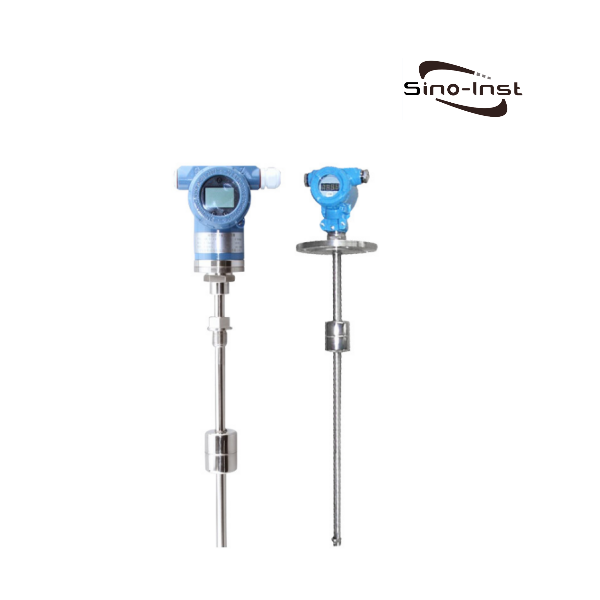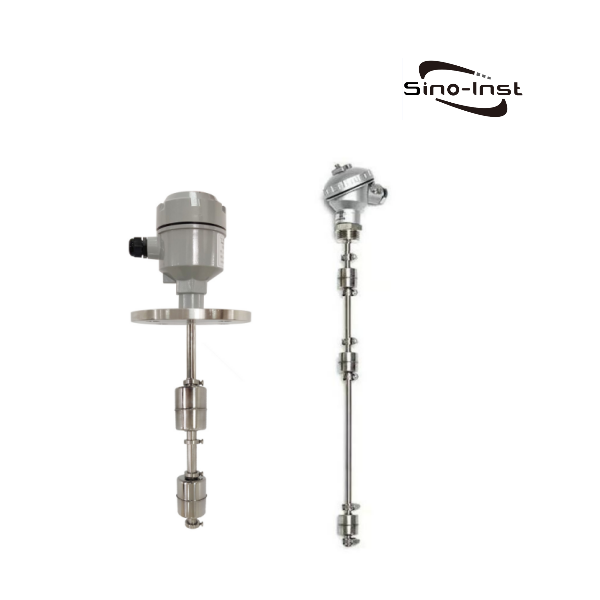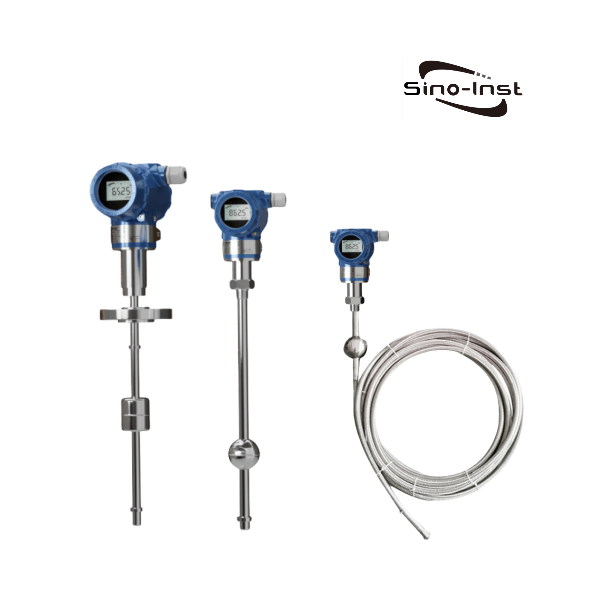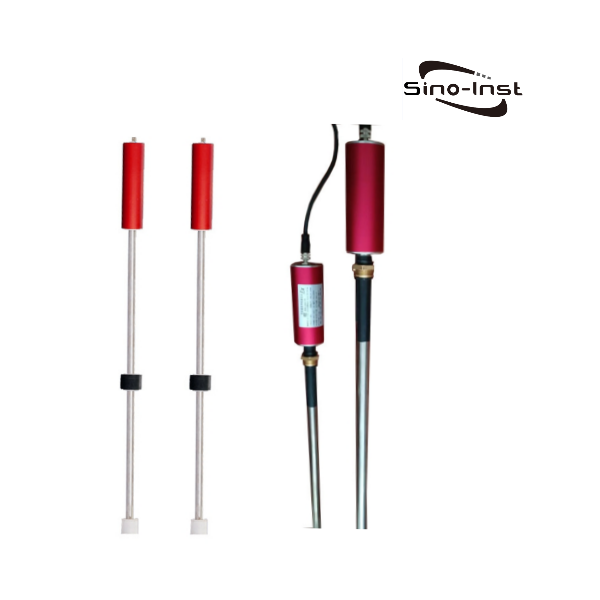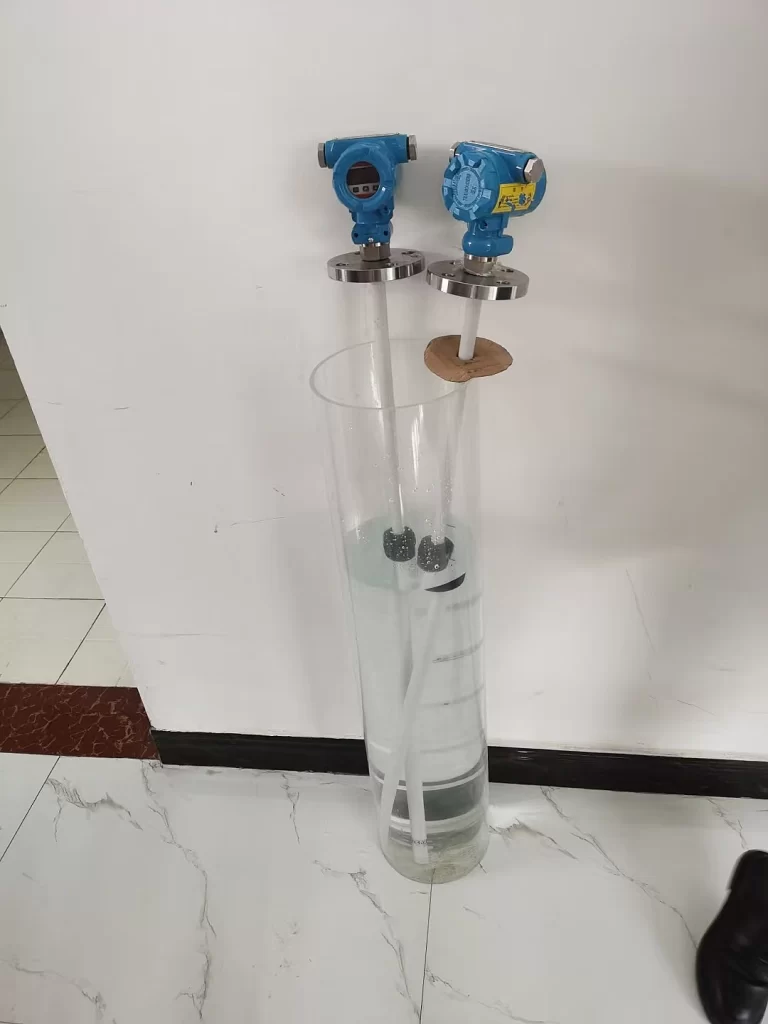
Among various technologies available for level measurement, the float type level transmitter stands out for its naiveness, accuracy, and cost-effectiveness.
All float-operated Level transmitters and sensors are based on the principle “the buoyancy force action on an object is equal to the mass of liquid displaced by the object.”
We will explore float level sensors in detail, from their working principles to types.
Float Type Level Transmitters/ Sensors Working Principle
Float level sensors operate on the buoyancy concept. The float is intended to be less dense than the liquid being measured, allowing it to float on the liquid’s surface. The float rises or lowers when the liquid level changes and the location of the float is monitored by a switch or sensor.
This switch or sensor, which senses the position of the float via magnetic, ultrasonic, or other technologies, can be mechanical or electronic.
The working process includes following components:
- The Float
- Guide Rod or Tube: The float moves along this rod or tube as the liquid level changes.
- Sensor Mechanism: Usually includes reed switches, resistive elements, or magnetic coupling.
- Signal Output: The float movement is converted into an analog or digital signal representing the liquid level.
Float level transmitters can be configured to provide either point level detection (like high/low alarms) or continuous level measurement.
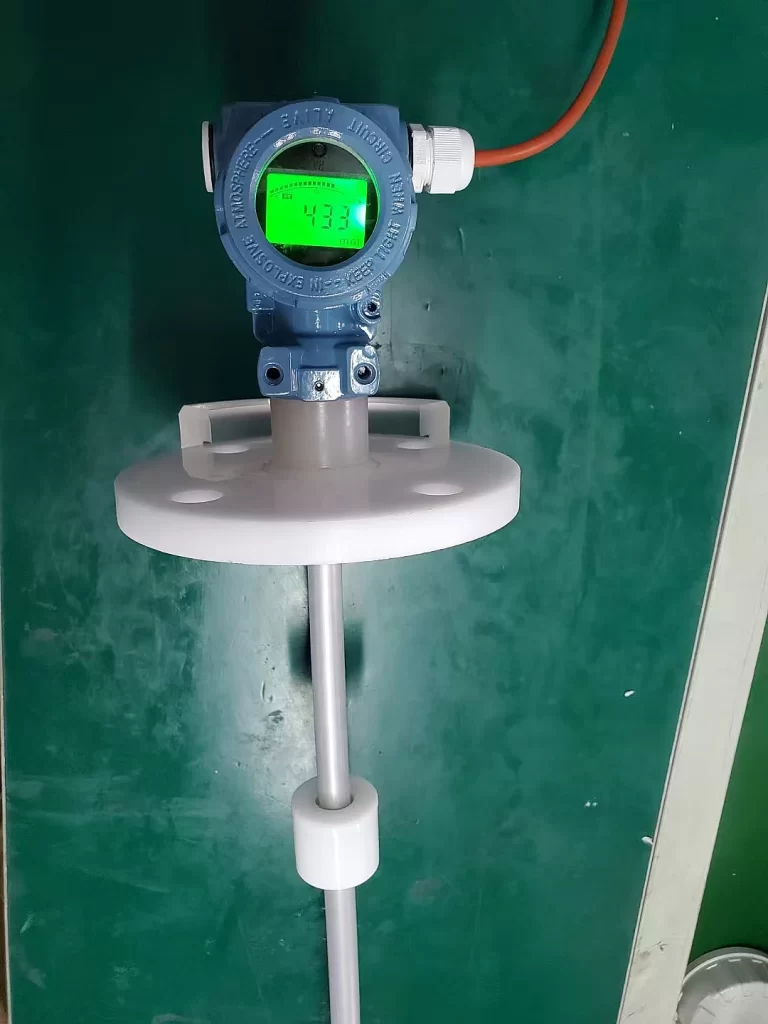
Continuous Float Level Sensors
Perhaps the simplest form of liquid level measurement is with a float: a device that rides on the surface of the fluid within the storage vessel. The float itself must be of substantially lesser density than the substance of interest, and it must not corrode or otherwise react with the substance.
A continuous float level transmitter is essentially a sensor with built-in electronics that converts the float’s position into a standardized electrical signal. It provides continuous feedback to control systems.
A continuous float level sensor offers real-time monitoring of liquid level. Unlike discrete or point level sensors, which only trigger alerts when levels cross predefined thresholds, continuous sensors provide an ongoing measurement, typically as an analog output (e.g., 4-20mA or 0-10V).
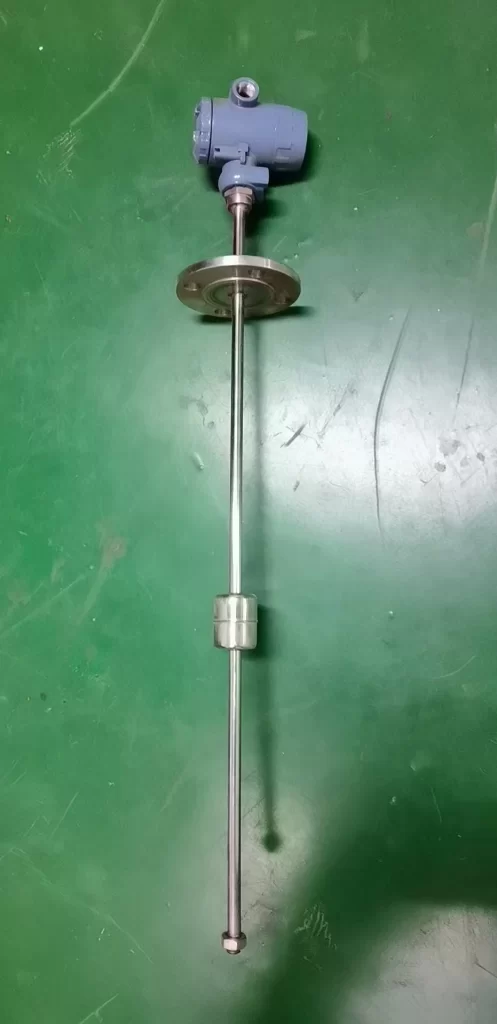
Components:
- Float mechanism (magnetized or conductive)
- Sensing stem with reed switches or resistive elements
- Transmitter electronics
- Output signal (usually 4-20 mA)
Benefits of Continuous Float Level Sensors
- Precision Monitoring
- Low Power Consumption
- Highly Durable
Typical Applications of Continuous Float Level Sensors
- Monitoring oil levels in transformers
- Chemical dosing systems
- Tank farms
- Pharmaceutical process vessels
A continuous float level transmitter can integrate directly with SCADA or PLC systems to facilitate automation and remote monitoring.
Types of Float Level Sensors
- Magnetic Float Level Sensors
These sensors use a magnetic float that moves with the liquid level. As it rises or falls, it actuates reed switches placed along a stem. They are with a simple design, minimal maintenance
Use Case: Fuel tanks, water tanks - Resistive Float Sensors
These use a float that moves along a resistive track. As the float position changes, the resistance value varies, altering the analog output.
Advantages are: Accurate analog output, suitable for integration with analog instrumentation
Use Case: Continuous float level measurement in industrial tanks - Potentiometric Float Sensors
A float moves along a resistive strip, acting like a potentiometer. Output voltage changes with the float’s position.
Advantages include Linear output, good for small tanks.
Use Case: Laboratory and precision applications - Ultrasonic + Float Combo
Some modern designs combine traditional floats with ultrasonic sensors for redundant and highly accurate readings.
Analog Float Level Sensors
An analog float level sensor produces a variable electrical signal (voltage or current) proportional to the position of the float. Like 4-20mA. This signal is typically used for continuous level monitoring.
Features of Analog Float Level Sensors
- Output Signal: Common outputs include 4-20 mA, 0-5 V, or 0-10 V.
- Compatibility: Easily integrates with PLCs, data loggers, and control systems.
- Linear Response: Output changes linearly with fluid level.
The analog output can be easily visualized using HMIs or integrated into automated systems for control functions such as pump actuation.
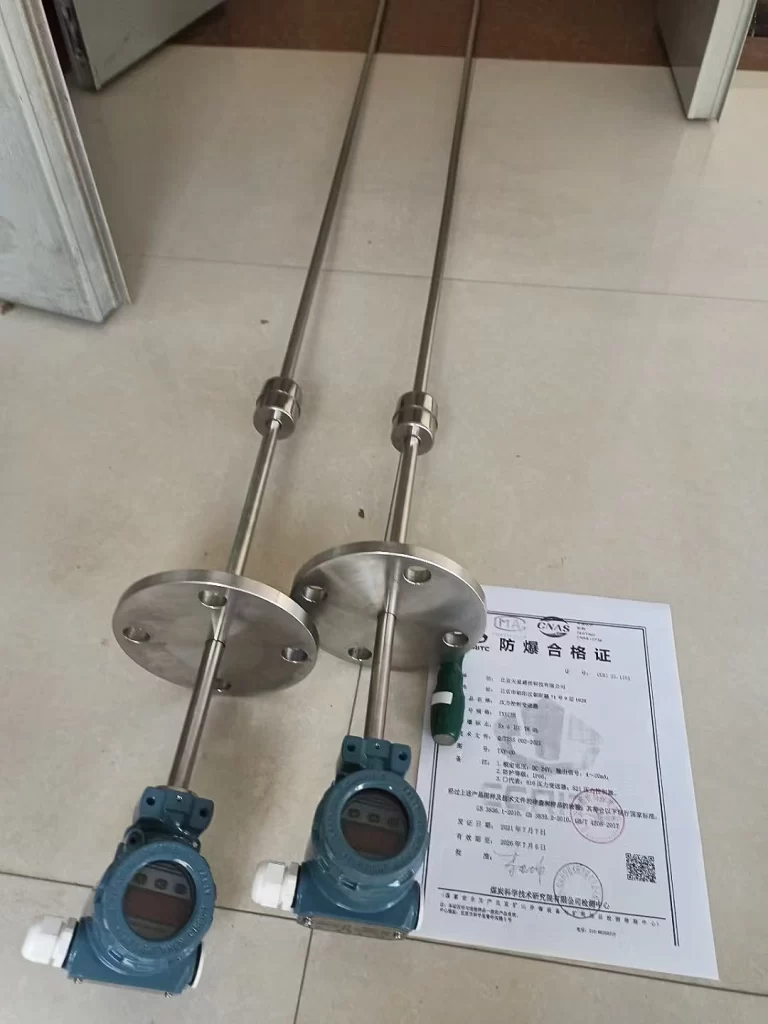
Magnetostrictive level transmitter vs. float type level transmitter
Because both magnetostrictive level transmitter and float type level transmitter have magnetic floats, many users will confuse these two level meters. Here we make a comparison:
In principle, the float type level meter works based on the principle of buoyancy. The magnetostrictive level transmitter works based on the principle of magnetostrictive induced torsion waves. That is, the magnetostrictive effect. The principle of the magnetostrictive level transmitter is more complicated.
In terms of accuracy, the accuracy of the magnetostrictive level transmitter is usually higher than that of the float type level transmitter. It can reach ±1mm. The float type level transmitter has an accuracy of ±10mm.
Due to the difference in accuracy and working principle, the scenarios in which these two level meters are applicable are also different. The float type level transmitter is more suitable for occasions where the accuracy requirements are not too high, while the magnetostrictive level transmitter is suitable for occasions that require high-precision measurement.
The float type level transmitter is usually simpler and relatively easy to maintain and operate. Magnetostrictive level transmitters may require more professional maintenance and operation due to the involvement of more electronic components and complex working principles.
In general, float level transmitters and magnetostrictive level transmitters each have their own advantages and limitations. The choice of which level meter depends on the specific application requirements and environmental conditions.
Key Factors to Consider When Selecting a float type level transmitter
When choosing a float type level sensor or transmitter, the following parameters should be considered:
- Liquid Properties:
- Density and viscosity
- Corrosiveness
- Presence of solid particles or foam
- Tank Characteristics:
- Material (metal, plastic)
- Shape (vertical, horizontal)
- Access (top-mounted or side-mounted sensors)
- Measurement Type:
- Point level detection vs. continuous measurement
- Local display or remote transmission
- Signal Type:
- Analog (e.g., 4-20 mA)
- Digital (Modbus, HART, etc.)
- Installation Environment:
- Hazardous area certification (ATEX, IECEx)
- Temperature and pressure limits
- Mounting options (flanged, threaded)
More Level Measurement Solutions
- All-inclusive Guide To Bin Level Measurement Systems
- An Out-and-Out Guide To Different Types Of Level Transmitters
- Bitumen And Asphalt Level Meters: Let’s Learn More About Them
- Bin Level Indicators and Controllers
- Dry Materials-Bulk Solids-Powder Level Sensors Guide
- Role of Hydrostatic Level Transmitters In Well Water Level Monitoring Process
- Water Level Pressure Transducers
- Typical Ultrasonic Level Sensor Applications and Advantages
- Different Diesel Level Sensors for Diesel Tank Level Measurement
- 4 Wire – 3 Wire – 2 Wire Ultrasonic Level Transmitter
The float type level transmitter remains a time-tested workhorse in the field of level measurement. Whether you need a basic float level sensor or a sophisticated continuous float level transmitter with analog output, there are solutions available to match virtually every industrial need.
Sino-Inst is a Professional flowmeter manufacturer and supplier. Sino-Inst sells through a mature distribution network that reaches all 50 states and 30 countries worldwide. We are looking forward to helping you to fulfill your specific needs.
-1.jpg)
